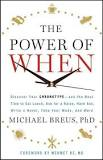Tidbit Blogging – a Trend that Never Goes Out of Style
 In blog marketing, is it worth the effort of digging up curious and little-known facts related to your business or industry? Make that a big “Oh, yes”! Readers’ interest is piqued, you’re positioned as an expert in your field, and you’re rewarded with precious extra moments of precious attention. (Just learned that my favorite source for ripe tidbits is Mental Floss Magazine has just published its last paper issue; from now on it will be digital all the way!)
In blog marketing, is it worth the effort of digging up curious and little-known facts related to your business or industry? Make that a big “Oh, yes”! Readers’ interest is piqued, you’re positioned as an expert in your field, and you’re rewarded with precious extra moments of precious attention. (Just learned that my favorite source for ripe tidbits is Mental Floss Magazine has just published its last paper issue; from now on it will be digital all the way!)
Here’s just one juicy tidbit from Mental Floss to illustrate my point: In 2007, editors inform readers, the House of Representatives in the state of Oklahoma voted 78 to 19 to make watermelon their state vegetable. State Senator Don Barrington justified the vote by saying watermelon is a member of the cucumber family (Botanically speaking, Mental Floss reminds us, cucumbers are fruits.) Meanwhile, in Arkansas, the Vine Ripe Pink Tomato is both the state’s official fruit and its official veggie!
Sure, that info is funny and unusual, but why do I think bloggers could use those tidbits to advantage? For one thing, this tidbit explodes some commonly held myths (cucumbers and tomatoes are vegetables and belong in salads, never desserts). More importantly, those true tales engage readers’ interest, and we can use them to lead into some little-known facts about our own (or our clients’) products and services. Think cukes and tomatoes in:
- Catering
- Cooking
- Gardening
- Restaurants
- Beauty products
How does the process work? Well, the tidbit becomes the jumping off point for explaining what problems can be solved using that business’ products or that practice’s services, for defining basic terminology, and for putting modern day statistics into perspective.
I could see business bloggers using a second funny tidbit I pinpointed in this latest Mental Floss issue as a lead-in to a serious discussion about educational policy and parenting:
Wooden paddle spankings are still legal in 19 American states.
This little gem deals head-on with the touchy issue of corporal punishment both at home and at school. Think about your own business, I ask owners in the course of providing them with business blogging assistance: Is there anything that might be considered unsafe, cruel, or environmentally non-friendly about your industry or your business? Rather than avoiding the topic, what about using the blog to explain what you as a business owner are you doing to mitigate those factors?
Funny or serious, tidbit blogging is a trend that I can’t see ever going out of style!




 Those word “skeletons” can be use, I explained:
Those word “skeletons” can be use, I explained:
Follow us online!